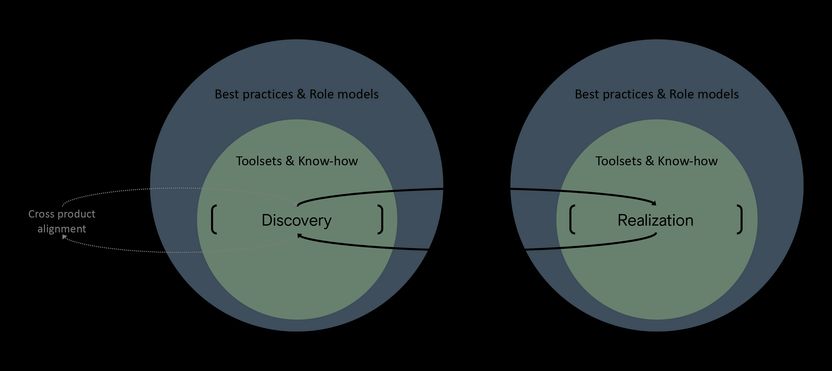Context
H&M Group is on an exciting journey towards truly embedding customer centricity in everything we do. Though such scale of transformation in an established business will be challenging. This lands to a new group function called Business Tech where it is a true product organization with a good level of autonomous of all product teams within the function.
Though a good product organization could not provide all answers to how to work in a truly customer centric manner, nor how to base product development on customer needs. Not to mention that, this new way of working will cause confusions of how to collaboration with rest of the organization whom have been used to working on an out-dated methodology.
To provide potential answers to above questions, as a Product Design Lead, as well as whom were lucky to be chosen to be part of the early agile trial at H&M, I step up to lead explorations on these 2 topics:
- How can we embed customer centricity in agile product teams on a large scale?
- How can we educaate rest of the organization of how to deep dive into customer values when collaborating with Business Tech?
Approach
From here onwards, product refers to the core assets of most of the H&M Group's businesses such as garments and accessories. For product team related term, digital product will be used.
Our core
The core of our company are the garments and accessories we sell; digital products of all the product team are a mean to sell what our fashion designers created.
This is the scene I set at the start of most of the conversations. It sets a common ground of discussions that in many cases, there should not be much conflict of interests between product teams or between product team with other functions. Though this doesn't mean that conversion is always the guiding principle, rather, we empower our customer to look and feel good through connecting with us.
Take an example, through the value chain, from the birth of a single product till a customer owns this product, even its recycling and reuse, there are countless systems, functions and people involved. For most of the "internal" systems such as garment designing and buying systems, many do not realise that its success will contribute to what end customer would experience. Therefore most of the product teams owning these systems mainly focus on the success of their digital product rather than on how they could contribute to the success of our end customers.
Connecting the whole value chain and embed this customer centric mindset enables tight collaboration between product teams and vaiours systems, allowing information to flow from the origin to end customers, maximizing efficiency and reflecting customers' needs
Common practices
After setting the right mindset, some product teams would still find it difficult to materialise this mindset into daily scrum activities. In addition, UX Design or Product Design are common seen as the only competence to have the responsibility to carry out customer centric practices. The danger of such approach is that, how and why being customer centric will be lost during translation among even just within a product team including all other competences. How could we democratize customer centric practices becomes the key to success.
Reviewing a common product lifecycle, inevitably 2 steps are required: discovery and realization (following up becomes part of discovery of next iteration). Zooming into discovery step, in fact, its essence is about defining the right activity based on each case, rather than relying on a particular competence. Depending on the case, existing behavioural data, hypothesis or validation data are all equally important. To enable parallel discovery which is common even within one sprint, anyone within or ouside product team that can supply corresponding knowledge can and should participate take the lead.
Try, learn and reflect

There is no one model that fits all. Above is an early illustration of what makes sense for our transformation. To support scaling this practice, I collaborate with agile coach community to pilot such model in a limited amount of product teams and learn from their experiences.
When it is proven valuable, the plan is to generate toolsets and know-hows around these 2 steps so that the rest of the organization can quickly run with what is available instead of digesting a theoratical model. Ultimately, best practices and role models with concrete examples are the simplest way to scale such practice in a fast pace.
What's next
At the time of writing, this is still an ongoing work at the stage of try, learn and reflect. Transformation is not an one-off task, it is a process that everyone learn and grow together.